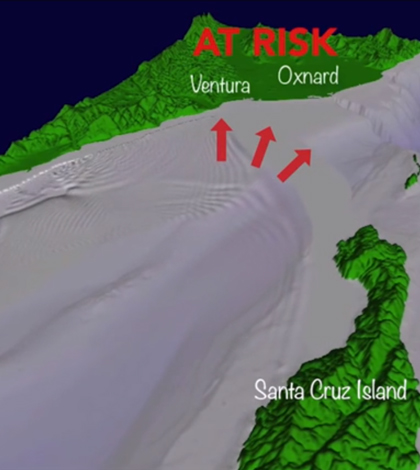Simulation Shows How Tsunami Would Affect California Coast

Researchers use a computer model to predict what may happen if an earthquake sent a tsunami toward the California coast. (Credit: University of California, Riverside)
A study led by seismologists at University of California, Riverside, has charted the path a theoretical tsunami could take if an earthquake occurred off the the coasts of Oxnard and Ventura in California. Their approach is detailed in a release covering the research.
Much of the work relied on computer models that the scientists used to simulate what could happen given the occurrence of an actual quake. At the beginning of the action, the earthquake would occur quickly, within about 20 seconds, and be caused by the slipping of a fault line running beneath the ocean. From that point, the seafloor in the area sinks and causes a major displacement of the water column that helps spur the formation of a tsunami.
The researchers watched the action that would come after, saying that the wave would reach Santa Barbara within about five minutes. After reaching that city, the water moves toward the deeper waters of the Santa Barbara Channel and begins to rotate counterclockwise toward Oxnard and Ventura. These two cities are then flooded by the tsunami, about 30 minutes into the simulation. Effects to the entire regional coastline include extensive flooding as well.
Top image: Researchers use a computer model to predict what may happen if an earthquake sent a tsunami toward the California coast. (Credit: University of California, Riverside)





0 comments